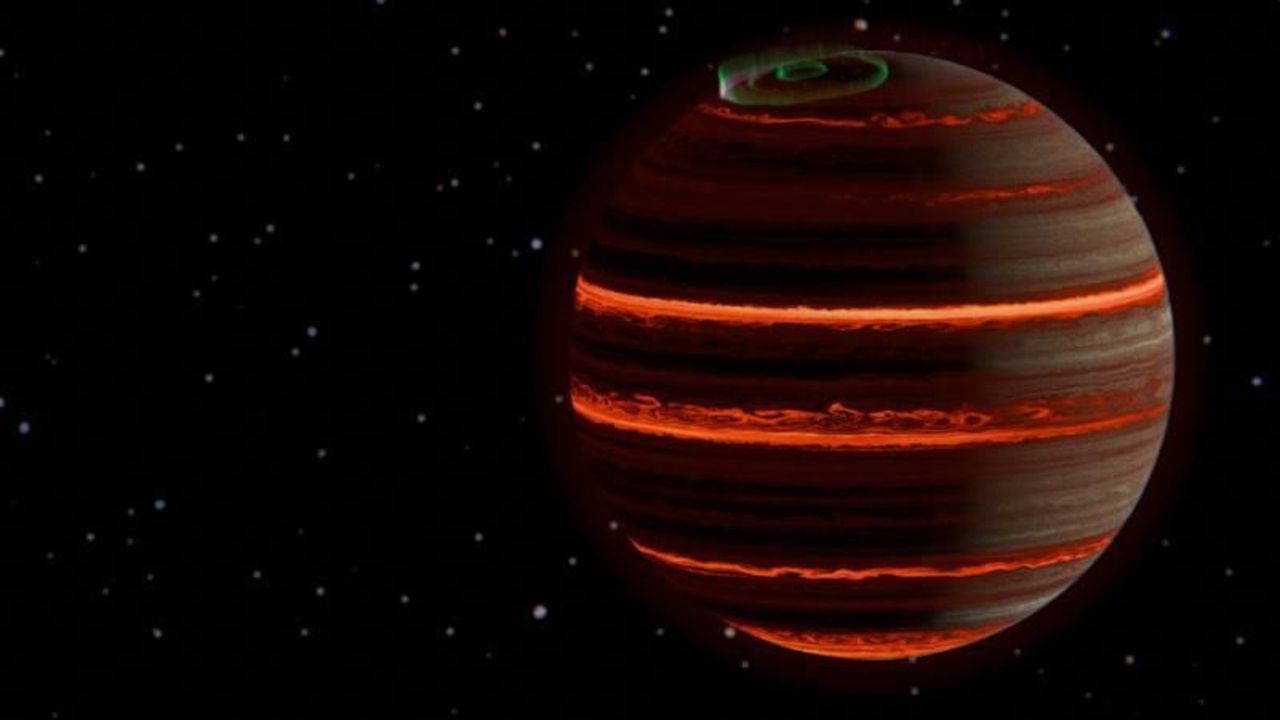Astronomers have achieved a groundbreaking milestone by delivering the first detailed weather report of a distant world, known as SIMP-0136, which drifts through space without a sun. Located approximately 20 light-years away in the constellation Pisces, this intriguing celestial body has been classified as a brown dwarf, often referred to as a “failed star.” Unlike traditional stars, SIMP-0136 lacks the mass required for hydrogen fusion.
Using the advanced capabilities of the James Webb Space Telescope (JWST), researchers tracked changes in SIMP-0136’s atmosphere during a full rotation, revealing insights into its temperature, chemistry, and cloud formations. The findings were published on September 26, 2023, in the journal Astronomy & Astrophysics, marking a significant leap in our understanding of weather patterns beyond our solar system.
New Insights into Brown Dwarf Atmospheres
The study represents the first time that atmospheric variations of a brown dwarf have been directly measured. Lead author Evert Nasedkin from Trinity College Dublin emphasized the importance of these precise measurements. “These are some of the most precise measurements of the atmosphere of any extra-solar object to date,” he stated. Co-author Johanna Vos added that understanding these weather processes will be essential as astronomers continue to discover and characterize exoplanets.
The JWST’s sensitive instruments detected subtle variations in brightness as SIMP-0136 completed its rapid rotation every two and a half hours. This allowed scientists to create a detailed map of its atmospheric layers. Contrary to earlier assumptions that the flickering light resulted from transient clouds, the study indicated that the clouds, composed of sand-like grains of hot silicates, are surprisingly stable.
The most dramatic developments were observed in the upper atmosphere, where temperatures reached nearly 570 degrees Fahrenheit (300 degrees Celsius), significantly warmer than predicted. Researchers believe this unexpected heat is primarily due to auroras, which occur when charged particles interact with the planet’s magnetic field.
Comparing Auroras: Earth vs. SIMP-0136
On Earth, auroras manifest as stunning displays when solar wind particles collide with our magnetic field. However, SIMP-0136’s much stronger magnetic field amplifies this effect, causing charged particles to strike the atmosphere with greater intensity. The result is not only a brilliant glow but also an influx of energy that heats the upper atmospheric layers.
The study also observed minor temperature fluctuations of less than 40 degrees Fahrenheit (5 degrees Celsius) in deeper atmospheric layers. These variations may indicate the presence of massive storm systems, akin to Jupiter’s Great Red Spot, moving across the surface of SIMP-0136 as it spins.
Brown dwarfs like SIMP-0136 provide valuable opportunities for scientists to study atmospheric behavior in exoplanets that orbit distant stars. Without the interference of a parent star’s brightness, these celestial bodies serve as ideal models for understanding the weather on larger exoplanets.
Looking ahead, astronomers aim to apply similar techniques to investigate the atmospheres of exoplanets orbiting other stars. Future projects, including the Extremely Large Telescope and NASA’s planned Habitable Worlds Observatory, will enhance our ability to uncover how weather patterns evolve in these distant environments.
The research findings signify a pivotal moment in astrophysics, paving the way for more detailed studies of weather phenomena across the universe. As scientists continue to explore these distant worlds, the insights gained from SIMP-0136’s atmosphere will undoubtedly contribute to our understanding of exoplanets and their potential for habitability.
